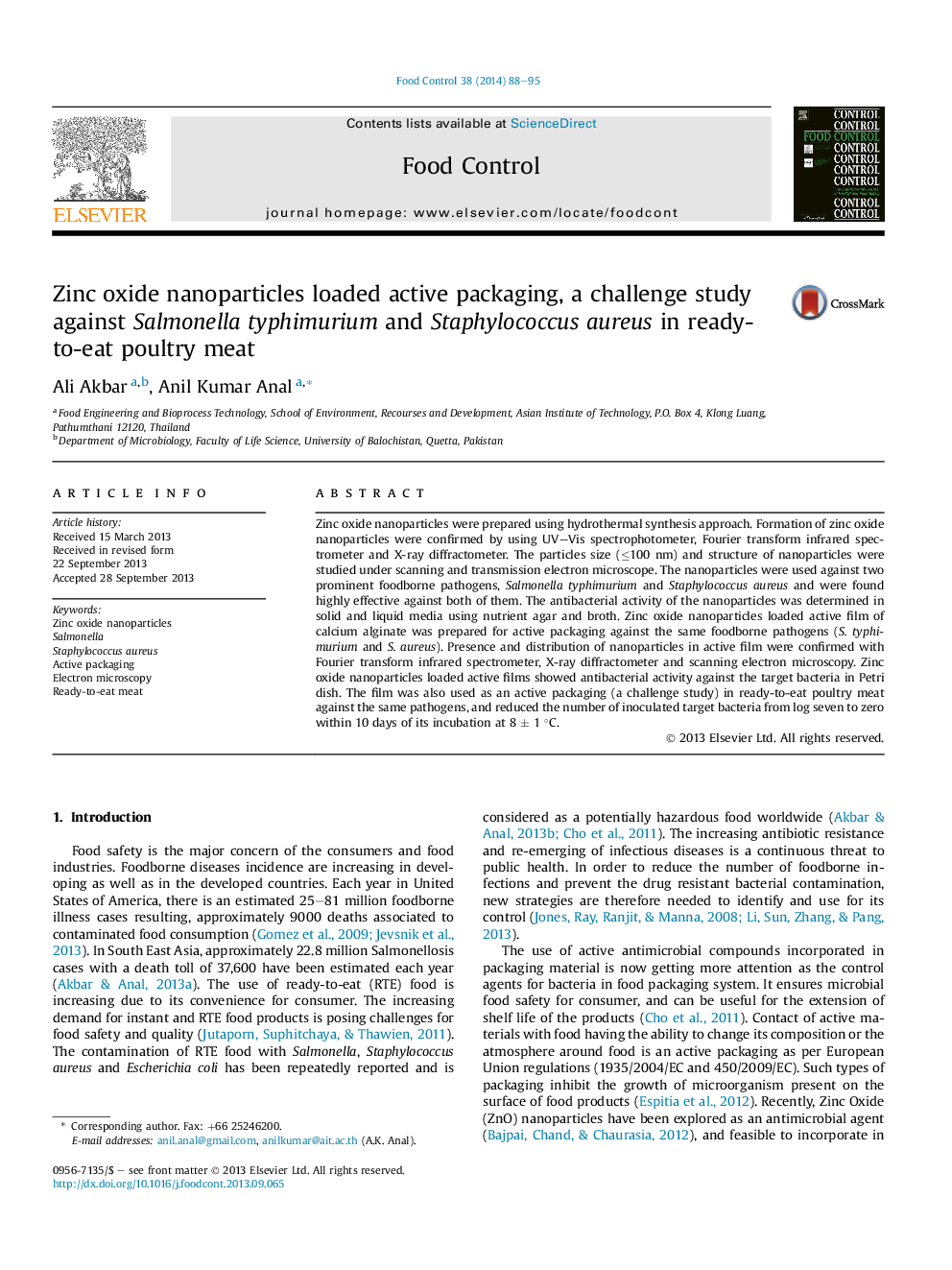| Article ID | Journal | Published Year | Pages | File Type |
|---|---|---|---|---|
| 6392039 | Food Control | 2014 | 8 Pages |
â¢ZnO nanoparticles were prepared and used against Salmonella typhimurium and Staphylococcus aureus.â¢Nanoparticles loaded film was used against the target bacteria in RTE poultry meat packaging.â¢The film effectively inhibited the growth of pathogens in-vitro and in a challenge study.â¢Active packaging with ZnO nanoparticles has a potential application in food safety.
Zinc oxide nanoparticles were prepared using hydrothermal synthesis approach. Formation of zinc oxide nanoparticles were confirmed by using UV-Vis spectrophotometer, Fourier transform infrared spectrometer and X-ray diffractometer. The particles size (â¤100 nm) and structure of nanoparticles were studied under scanning and transmission electron microscope. The nanoparticles were used against two prominent foodborne pathogens, Salmonella typhimurium and Staphylococcus aureus and were found highly effective against both of them. The antibacterial activity of the nanoparticles was determined in solid and liquid media using nutrient agar and broth. Zinc oxide nanoparticles loaded active film of calcium alginate was prepared for active packaging against the same foodborne pathogens (S. typhimurium and S. aureus). Presence and distribution of nanoparticles in active film were confirmed with Fourier transform infrared spectrometer, X-ray diffractometer and scanning electron microscopy. Zinc oxide nanoparticles loaded active films showed antibacterial activity against the target bacteria in Petri dish. The film was also used as an active packaging (a challenge study) in ready-to-eat poultry meat against the same pathogens, and reduced the number of inoculated target bacteria from log seven to zero within 10 days of its incubation at 8 ± 1 °C.
